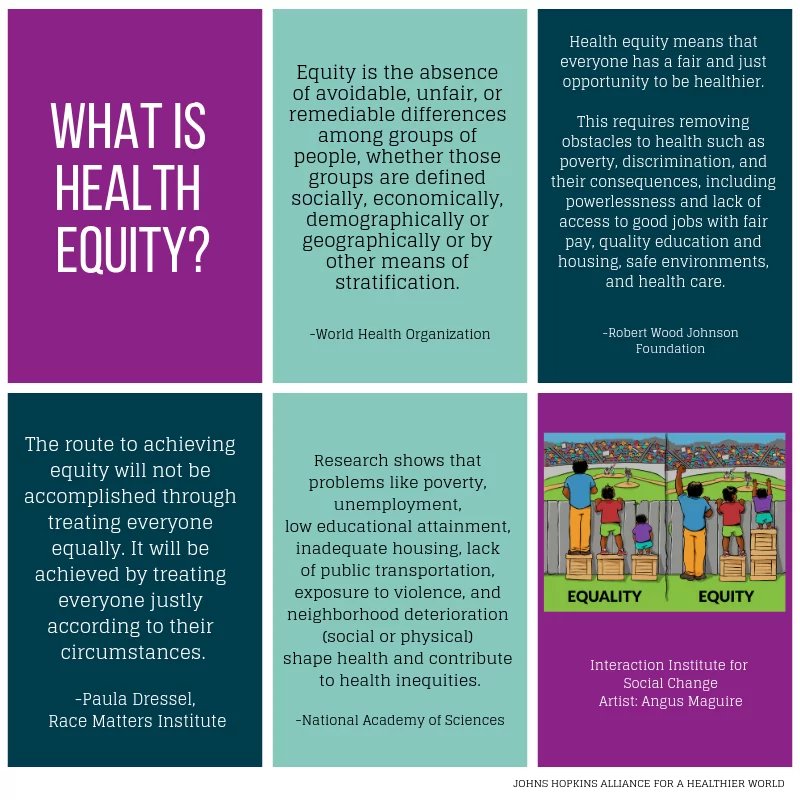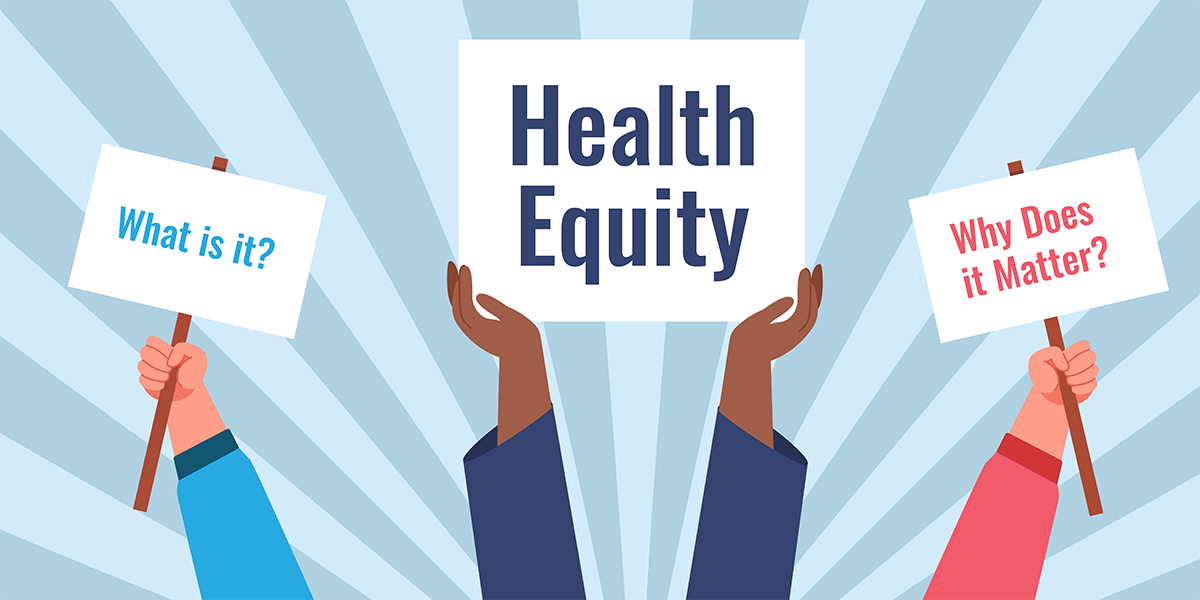Last updated on April 26th, 2024 at 07:50 am
In an era marked by the pursuit of progress and fairness, achieving well-being parity stands as a cornerstone of a just and humane society. The principle of well-being parity ensures that each individual, irrespective of their background, has an equal and just opportunity to attain their optimal state of wellness. Recent times have seen the prominence of well-being parity strategies, a strategic approach aimed at addressing disparities and fostering a more impartial healthcare system. This article delves profoundly into the myriad facets of well-being parity strategies, the responsibilities of well-being parity managers, the tools and techniques employed, and the significance of community involvement in shaping comprehensive well-being parity initiatives.

Understanding Well-being Parity
Health Equity embodies the principle of ensuring that every individual has a just and equitable opportunity to achieve their highest level of wellness. It transcends mere equal access to healthcare services; it encompasses the resolution of societal determinants of well-being, such as income, education, employment, and environmental factors, that frequently contribute to disparities among diverse populations. Well-being parity aims to eradicate these imbalances and create an even playing field where every individual can achieve optimal well-being outcomes.

The Role of a Health Equity Manager
A Health equity plans manager assumes a pivotal role in overseeing and executing well-being parity initiatives within healthcare organizations and communities. Their responsibilities encompass:
- Data Analysis and Assessment: Well-being parity managers scrutinize demographic and wellness-related data to discern imbalances among different population groups. This data aids in comprehending the distinct needs and challenges faced by marginalized communities.
- Strategic Blueprinting: These managers work closely with various departments to fashion and actualize comprehensive well-being parity initiatives. These plans delineate approaches to mitigate disparities in wellness access, outcomes, and quality.
- Community Engagement: Collaborating with local communities constitutes an integral facet of well-being parity planning. Managers liaise with community leaders, organizations, and inhabitants to comprehend their distinctive needs and involve them in shaping effective solutions.
- Advocacy for Policy Changes: Well-being parity managers advocate for alterations in policies, both at the organizational and governmental levels. This involves championing policies that tackle systemic obstacles to impartial wellness access and outcomes.
- Ongoing Assessment and Evaluation: Regularly evaluating the effectiveness of well-being parity initiatives is indispensable. Well-being parity managers track advancements, gauge outcomes, and make necessary alterations to ensure the triumph of the strategies.
Tools and Approaches for Well-being Parity Planning
Formulating a comprehensive well-being parity plan mandates a systematic approach that addresses diverse dimensions of wellness disparities. Key tools and approaches encompass:
- Well-being Parity Planning Framework: A well-being parity planning framework serves as a systematic guide for healthcare entities in crafting effective well-being parity plans. It often encompasses steps for evaluating disparities, setting objectives, conceptualizing strategies, allocating resources, and monitoring progress.
- Community Wellness Needs Assessment: Conducting assessments to ascertain the distinct wellness needs and obstacles of diverse communities is pivotal. This insight informs the creation of targeted interventions that address the underlying causes of disparities.
- Cultural Proficiency Training: Healthcare providers undergo training to augment their comprehension of cultural nuances. This fosters the delivery of care that is responsive and apt for varied populations.
- Language Access Services: Ensuring the availability of healthcare information and services in multiple languages is essential for engaging populations with non-English languages and delivering impartial care.
- Synergies and Collaborations: Collaborations between healthcare organizations, community entities, governmental agencies, and non-profit organizations amplify the joint endeavor toward achieving well-being parity.

Cultivating a Health Equity Plan Blueprint
Forging a well-being parity plan demands a methodical approach that harmonizes with the principles and values of the organization or community. The process typically encompasses the following phases:
- Assessment and Data Compilation: Collect demographic and wellness-related data to pinpoint disparities in wellness access, outcomes, and quality among varied population segments.
- Establishing Objectives: Define explicit and quantifiable objectives targeting particular wellness disparities and outcomes. These objectives should be pragmatic and achievable within the stipulated timeframe.
- Devising Strategies: Formulate strategies and interventions that target the identified disparities. These strategies might include broadening access to care, enhancing cultural proficiency training, and bolstering community involvement.
- Resource Allocation: Allocate essential resources—financial, human, and technological—to effectively implement the strategies.
- Execution and Evaluation: Put the strategies into action and consistently assess their advancement. Regular evaluation determines whether the strategies yield desired outcomes and prompts modifications as necessary.
- Community Engagement: Involve community members, entities, and leaders throughout the planning process. Their input is invaluable in tailoring strategies to the specific requirements of the community.
Community Initiatives for Well-being Parity
Community engagement emerges as an indispensable facet of well-being parity planning. Community members possess invaluable insights into the challenges they encounter and the most efficacious means of addressing them. Crafting a community initiative for well-being parity entails:
- Listening Sessions: Organize sessions for listening or town hall meetings, where community members can share their experiences, concerns, and notions regarding wellness disparities.
- Interactive Workshops: Facilitate workshops that unite community members, healthcare practitioners, and policymakers to collectively brainstorm strategies for attaining well-being parity.
- Resource Identification: Identify existing community resources, such as local clinics, non-profit entities, and support groups, that can contribute to wellness parity endeavors.
- Cultural Sensitivity: Ensure that the strategies conceived are culturally sensitive and respectful of the distinctive values and beliefs of the community.
- Sustainable Planning: Strategize for the long-term sustainability of well-being parity initiatives by incorporating community members in continuous decision-making and implementation.
Well-being Parity Plans for Hospitals and Healthcare Entities
Well-being parity planning transcends community confines; healthcare entities, including hospitals, bear a pivotal role in ensuring impartial care delivery. Several strategies for devising well-being parity plans within healthcare settings encompass:
- Workforce Diversity: Foster diversity within the healthcare workforce to enhance cultural proficiency and enrich patient-provider communication.
- Language Services: Extend language interpretation and translation services to assure that language barriers do not impede wellness information and services.
- Culturally Competent Care: Train healthcare providers in cultural proficiency to guarantee that care is dispensed in a manner that respects patients’ cultural convictions and practices.
- Bias Mitigation: Implement strategies to curtail unconscious bias among healthcare providers, which can adversely impact diagnosis, treatment, and communication.
- Community Collaborations: Collaborate with community entities to discern local needs and develop initiatives that effectively address disparities.
The Significance of Health Equity Plans Initiatives
Wellness parity initiatives bear momentous significance in sculpting a more equitable and just healthcare system. They possess the potential to:
- Enhance Wellness Outcomes: By addressing societal determinants of wellness, wellness parity initiatives can yield enhanced wellness outcomes among marginalized populations.
- Diminish Healthcare Expenses: By forestalling preventable health issues and augmenting preventive care, wellness parity initiatives can lead to financial savings within the healthcare ecosystem.
- Elevate Patient Contentment: Dispensing culturally proficient and impartial care augments patient contentment and fosters trust in the healthcare system.
- Champion Social Equity: Wellness parity initiatives contribute to dismantling systemic barriers that perpetuate wellness disparities, advocating for a more just society.
Conclusion
In the pursuit of a more inclusive society, health equity plans emerge as guiding beacons, illuminating pathways to a balanced well-being. Like artisans shaping masterpieces, these strategies weave threads of harmony, offering a route toward universal well-being. Jointly crafted by communities, healthcare institutions, and policymakers, these blueprints epitomize progress, breaking down barriers and advocating equity through Wellness Parity Blueprints.
As we navigate this uncharted terrain, the fusion of equity and justice amplifies voices long silenced, propelling a symphony of policy reform. Through inclusivity, we plant the seeds for a society that not only embraces diversity but also nurtures empathy.
Beyond conventional healthcare boundaries, Equitable Health Strategies resonate in education, economy, and community fabric. They ignite a symphony of comprehensive advancement, echoing the notes of cultural sensitivity and harmonies of linguistic inclusivity. These resonances mirror a deep commitment to the tapestry of narratives that collectively shape our world.

In life’s intricate mosaic, health equity plans stand as golden threads, weaving destinies, transcending disparities, and guiding us towards a horizon of fairness and well-being. This transformative journey embodies the essence of equitable strategies. It’s not just an end goal; it’s a dynamic, enriching odyssey for us all. Through the skilled hands of health equity managers, the orchestration of health equity planning tools, and the collaborative spirit of a health equity planner, we co-create a narrative of change.
As these equity-driven initiatives echo within hospitals and healthcare institutions, they breathe life into a new era of healthcare equity plans. These designs stand as a testament to the human spirit’s yearning for fairness and compassion. Through them, we foster a symphony of health and fairness that resonates far beyond the confines of clinics and waiting rooms.
In the grand tapestry of societal progress, health equity plans are the intricate threads that hold the promise of transformation, weaving through every sector, every community, and every individual. They encapsulate the aspiration for a world where every individual, regardless of their background, thrives with optimal well-being, reflecting the true essence of inclusive strategies.
So, let us step forward, driven by the rhythms of these equitable strategies, and embrace the journey towards a world where fairness and well-being intertwine. Let the symphony of Balanced Well-being Frameworks guide us to a brighter, more just future for us all.
So, let us step forward, driven by the rhythms of Fairness in Health Designs, and embrace the journey towards a world where fairness and well-being intertwine, where Impartial Wellness Schematics pave the way towards a brighter, more equitable future for us all.

